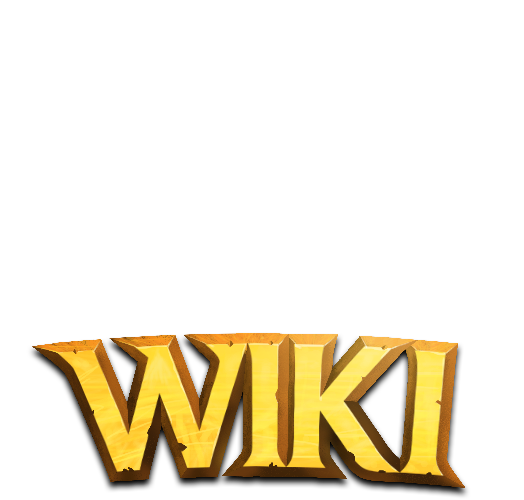(this is a big enough subject to warrant its own page now. starting with this) |
(I'll add some up to date screenshots shortly) |
||
| Line 1: | Line 1: | ||
| ⚫ | |||
| − | [[File:Play mode screen Wild promotional.jpg|thumb|right|450px|The [[Play mode]] screen with Wild format selected. Note the Standard format selection button at the top-right.]] |
||
| ⚫ | |||
'''Wild format''' or '''Wild''' is one of ''[[Hearthstone]]''<nowiki/>'s two [[game format]]s. Wild format presents an unrestricted playing experience without the deck restrictions of [[Standard format]], allowing the use of cards from any [[card set]]. |
'''Wild format''' or '''Wild''' is one of ''[[Hearthstone]]''<nowiki/>'s two [[game format]]s. Wild format presents an unrestricted playing experience without the deck restrictions of [[Standard format]], allowing the use of cards from any [[card set]]. |
||
Revision as of 23:20, 21 June 2016
Wild format or Wild is one of Hearthstone's two game formats. Wild format presents an unrestricted playing experience without the deck restrictions of Standard format, allowing the use of cards from any card set.
Wild is technically the default game format, and is used for all game modes where game format selection is not available. However, Wild format is locked for new players until they obtain a card which is not available in the current Standard format. Prior to this the player will only be able to select Standard format (where game format is available) and create Standard decks.
Wild cards can only be obtained through crafting. Card packs from Wild expansions are not available from the Shop, and Wild cards and card packs are never granted as rewards. Wild adventures also are not available from the Shop, although unlike Standard adventures players are craft all cards from Wild adventures without completing the relevant boss encounters, for the usual amounts.
The prefix Wild is used to refer to cards, game modes and adventures which fall within the Wild format, or which are only available in Wild format. For example, a Wild adventure is one which is no longer part of Standard format, while a Wild game mode is one which uses Wild format. Cards which are not currently valid in Standard format are termed Wild cards.
The symbol for Wild format is an infinity symbol formed from thorny vines. This matches the general theme of branches and vines overgrowing Wild interface elements, such as Wild decks, the player's Wild rank and the Play screen when Wild format is selected.
Design
Variety
With cards from any set allowed, Wild format sees a far larger range of cards in play. As a result, more synergies and combinations are available, with a higher power level overall. The format is expected to steadily grow in power over time, outstripping Standard format, and allowing some very 'wild' combinations intentionally prevented in Standard (see Balance, below). This can also allow for a far greater variety of decks in play.
One intention for Wild format is to provide a break from the sometimes predictable meta of Standard format, similar to Arena or Tavern Brawls. While some players may simply prefer the format, others may find more interest in it as the latest expansion or adventure grows older, and the meta begins to grow stale.[1]
Balance
"The format where anything can happen",[2] while Wild will initially resemble Hearthstone exactly as it always has been, with an ever-increasing pool of cards to choose from, and competitive play focused on the Standard format, Wild format has the potential to become less balanced over time. The developers will "be paying more attention in Standard", with "a little bit of difference of tolerance" to balance problems between the two formats.[3] The removal of design space restrictions for the creation of new cards may also lead to some unusual card interactions, due to performance in Standard format being the priority for designers. However, the developers insist they will still pay attention to card balance in Wild format, and act if necessary to prevent it from becoming too unbalanced.[4][5][6][7]
References
- ↑ IGN - BLIZZARD ON THE STATE OF HEARTHSTONE. (2016-06-10).
- ↑ A New Way to Play. (2016-02-02).
- ↑ PC GAMER: Ben Brode on why Standard Hearthstone has to ditch the old card expansions. (2016-02-02).
- ↑ Blizzard isn't throwing out old cards, YOU are (forum thread). (2016-02-02).
- ↑ Ben Brode on Twitter. (2016-02-04).
- ↑ Ben Brode on Twitter. (2016-02-04).
- ↑ Ben Brode on Twitter. (2016-02-04).
